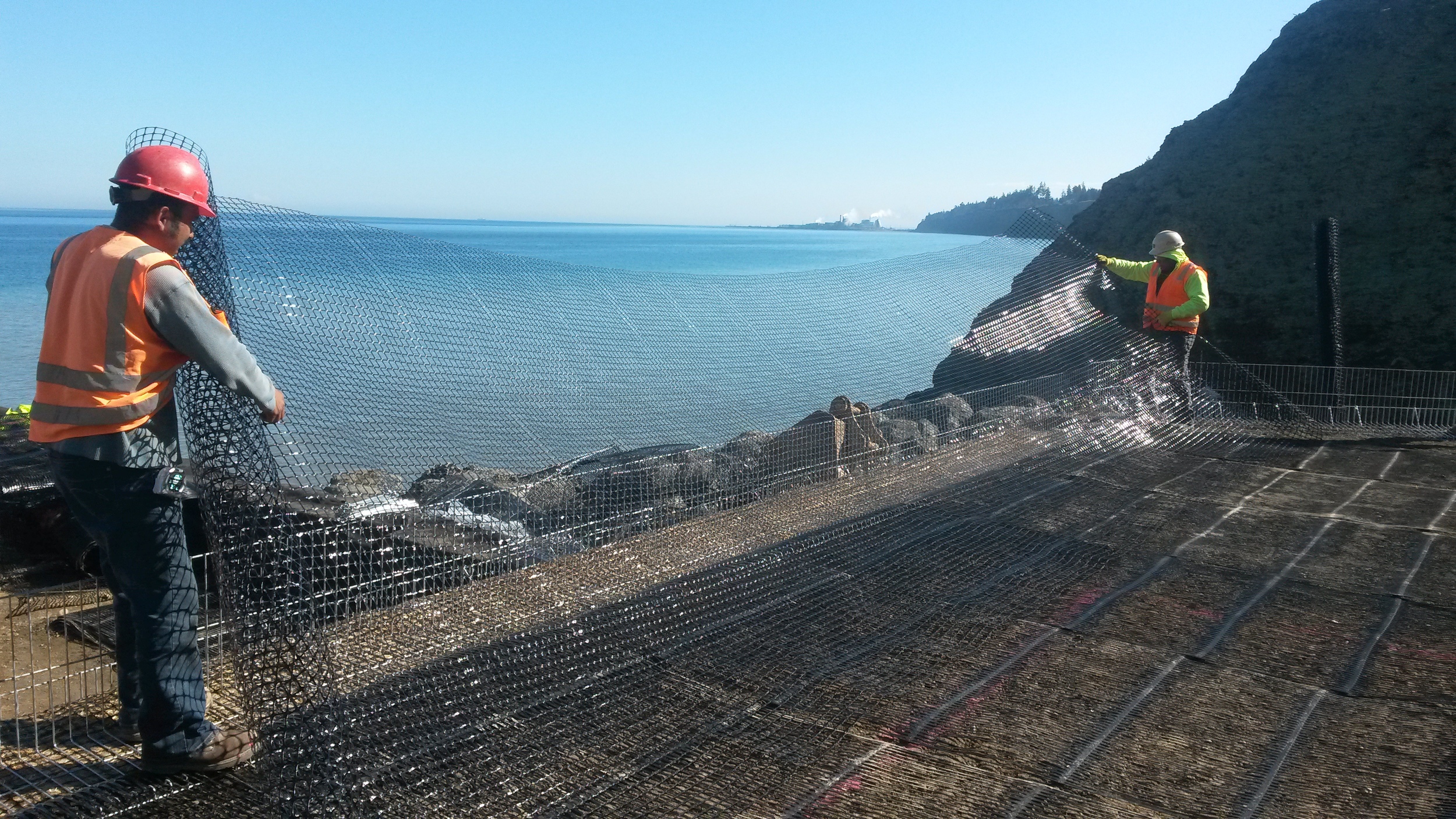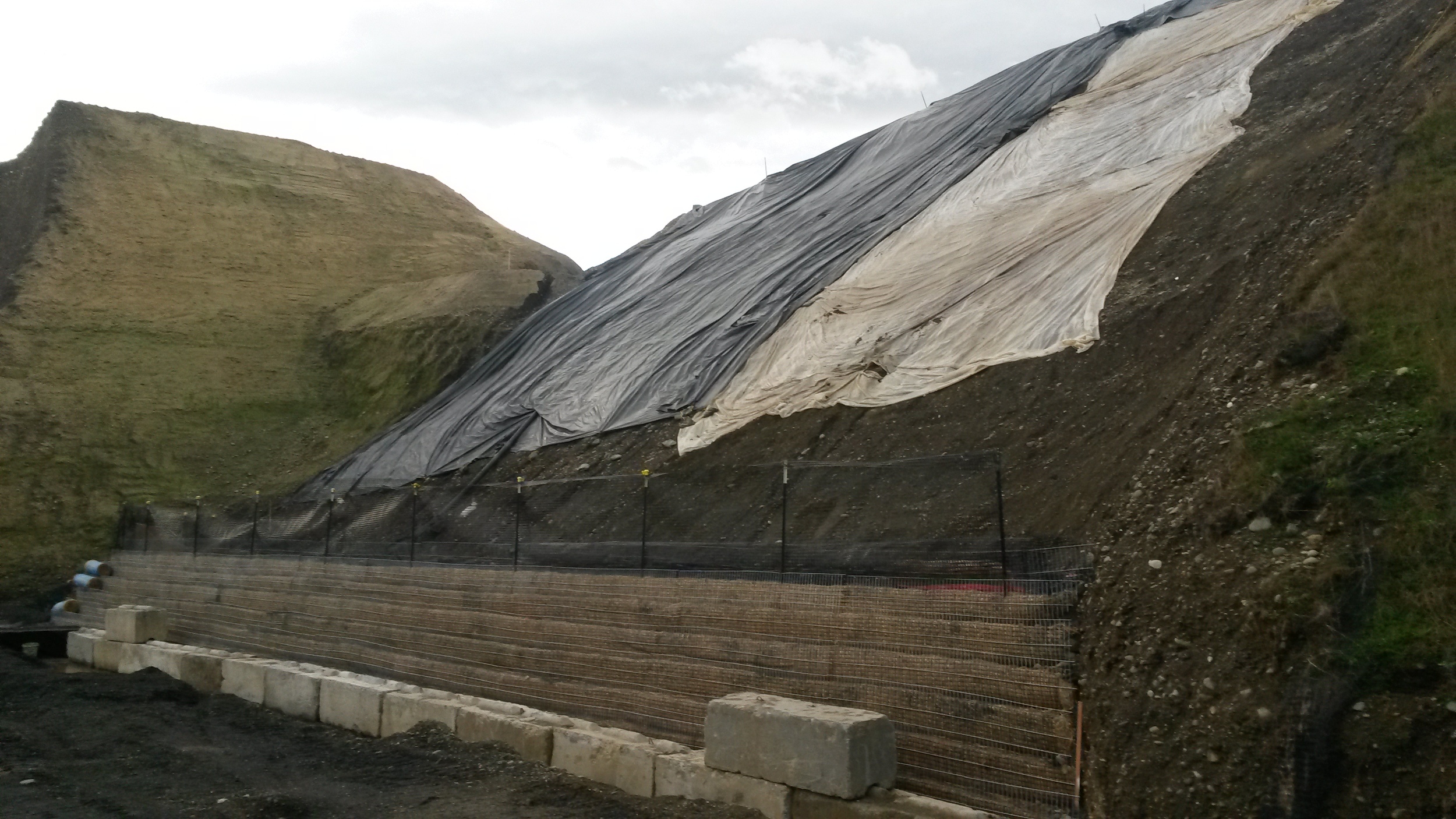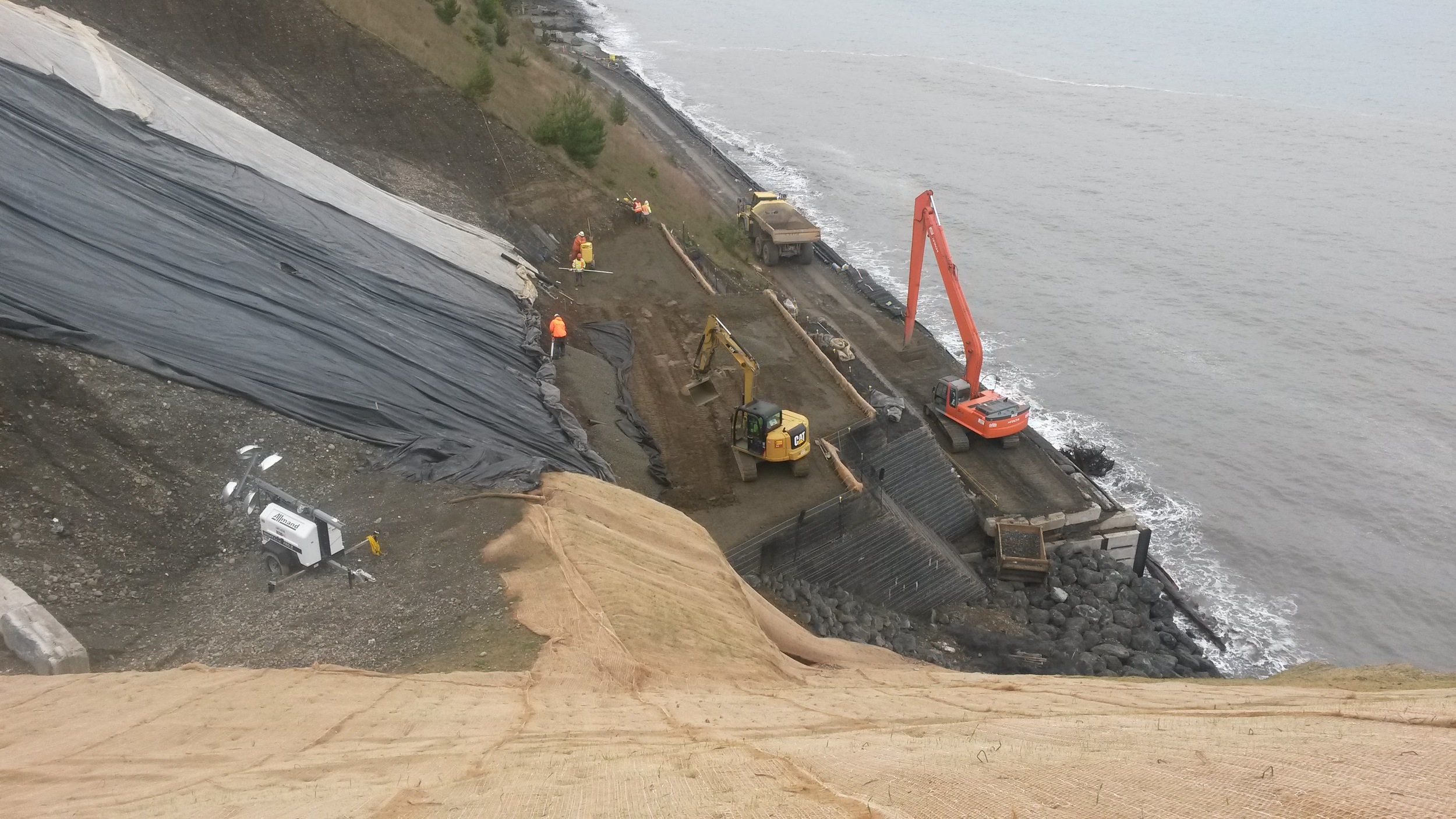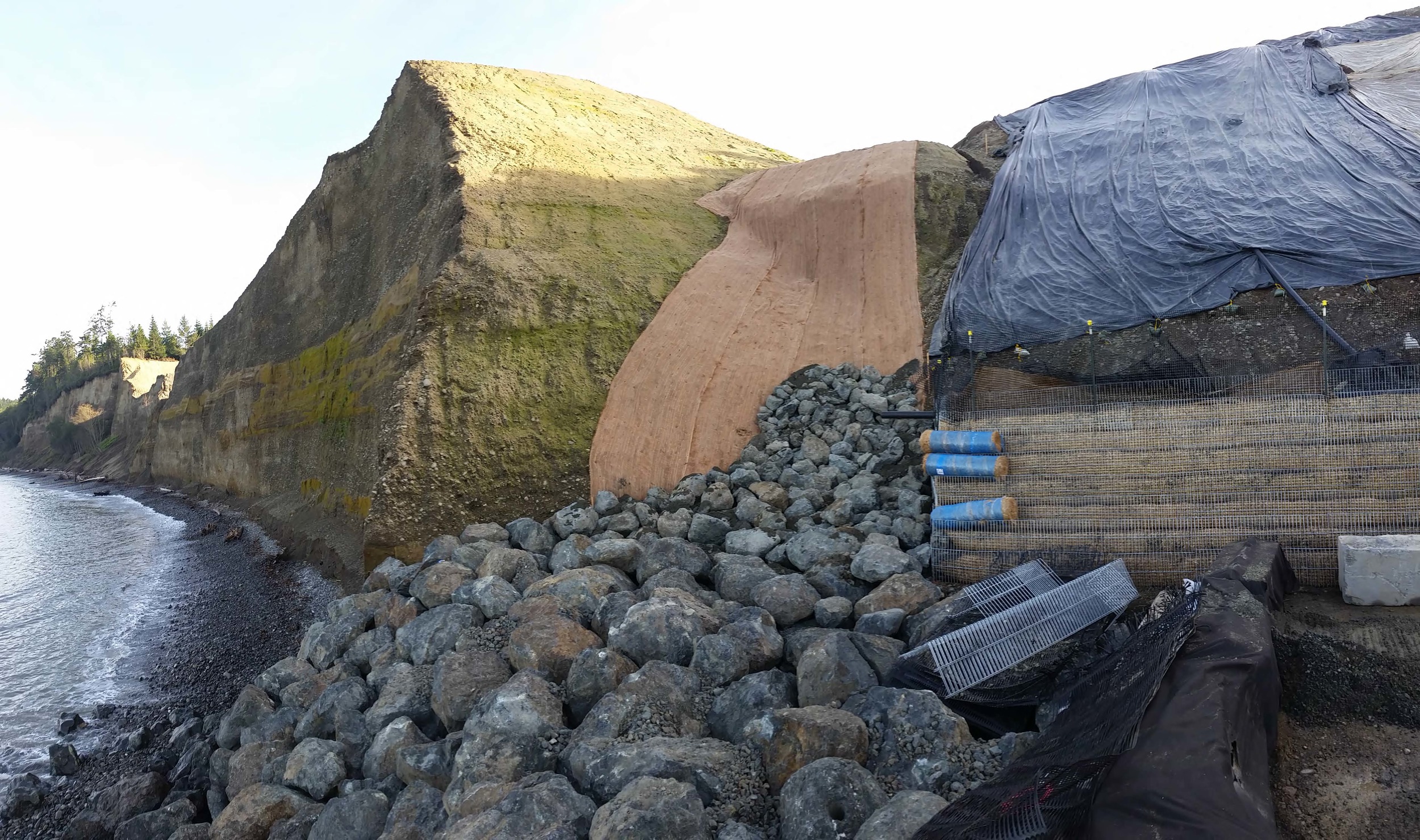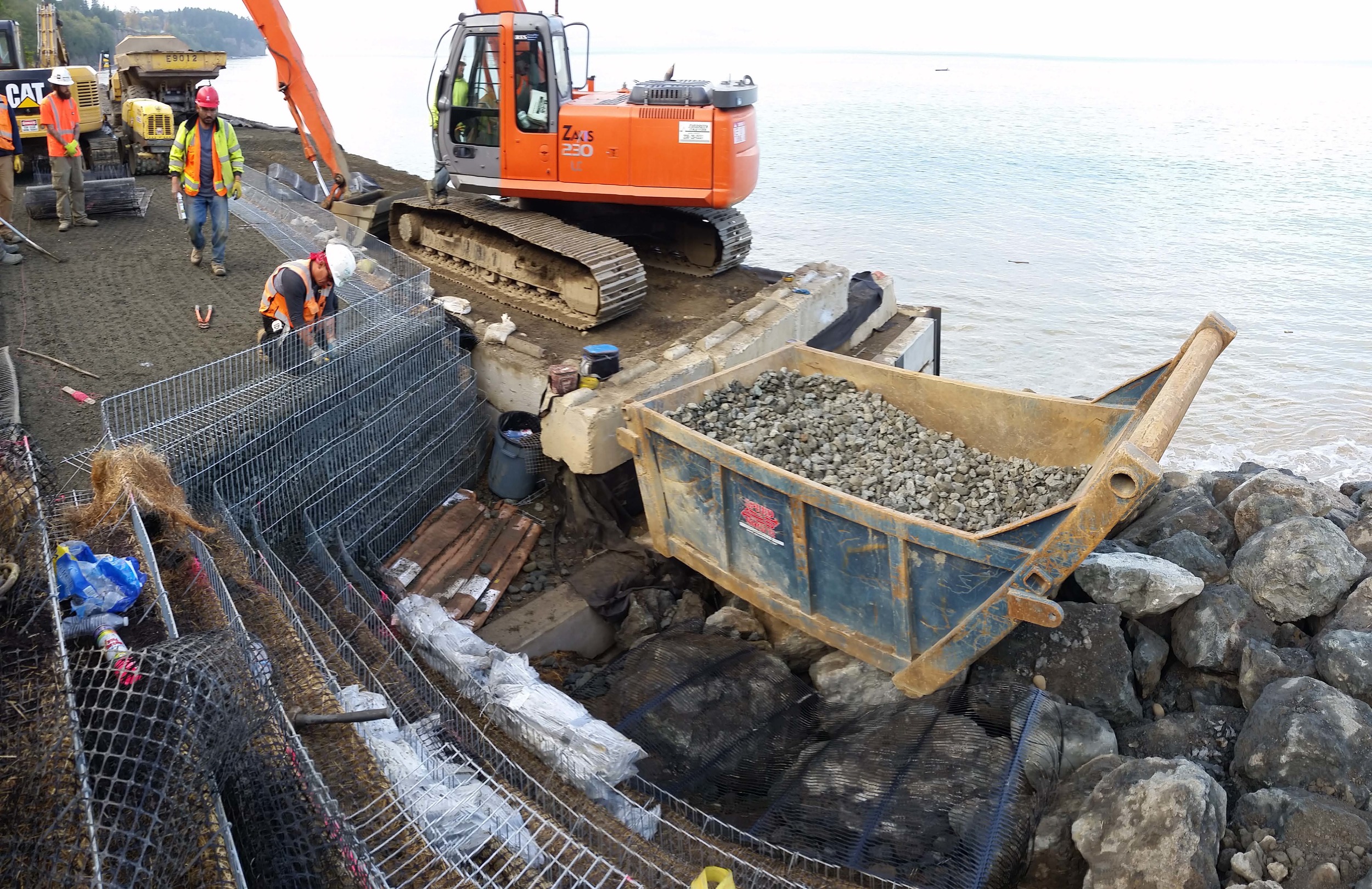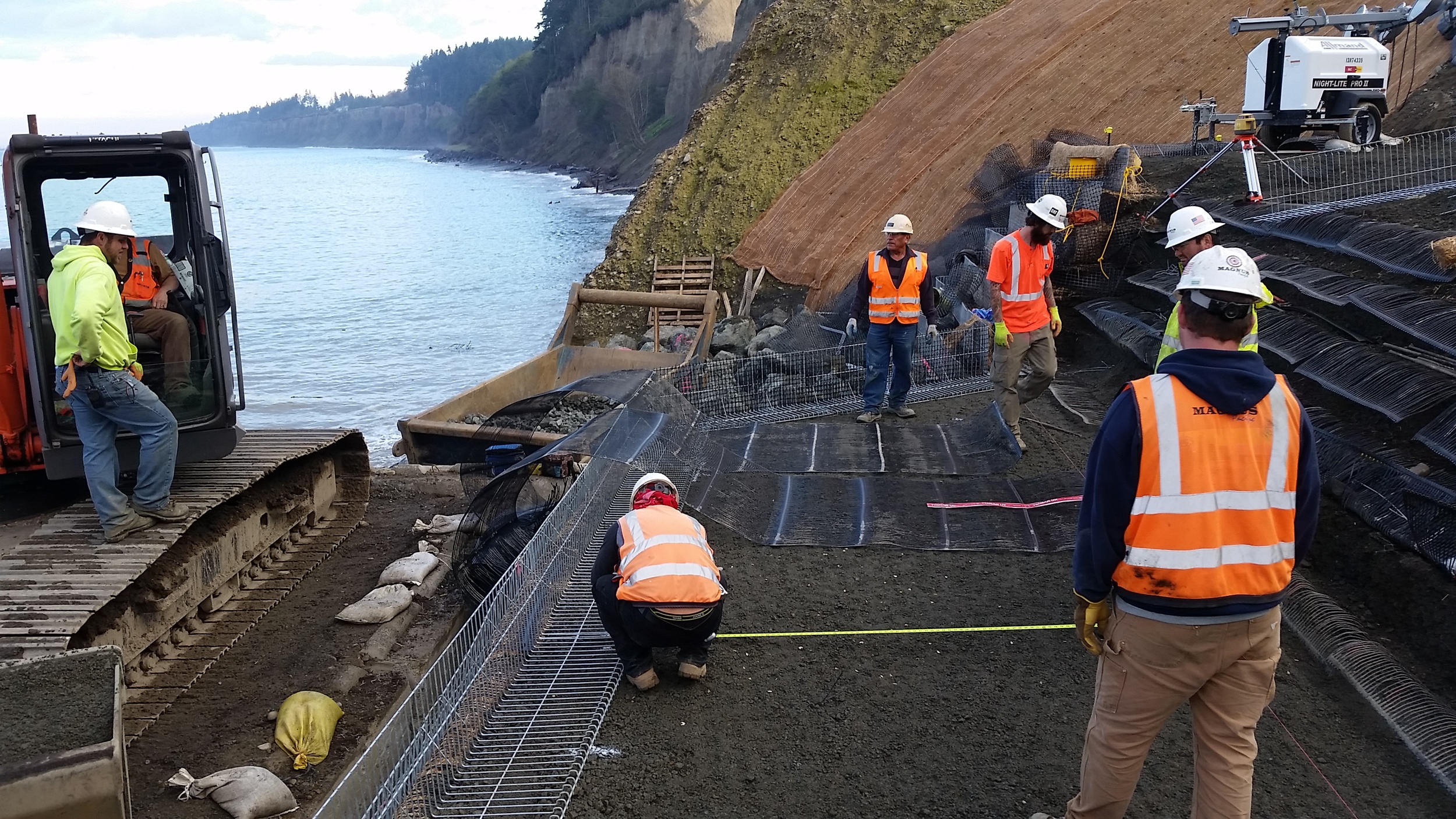Since 2007, Aspect has provided landfill engineering support to the City of Port Angeles on their closed landfill located on a steep bluff high above the Strait of Juan de Fuca. In addition to our ongoing work (annual groundwater and leachate monitoring programs, gas flare operation and maintenance, and greenhouse gas emission evaluations) we’ve been working to quickly stabilize the steep slopes that wall off the refuse from the marine environment.
A Tall Order
We were recently asked to complete the final design of a 110-foot-high reinforced slope buttress – the tallest such slope in Washington. The earthwork contractor had already begun work, standby fees were accruing, and the construction weather window was narrowing. Thus, time was of the essence to finish the design ahead of the winter wet weather season to protect the surrounding environment from further slope instability. Although a design of this magnitude would normally take six to eight weeks, our geotechnical engineers worked hard to crank out the design in less than half that time.
Creating a Strong and Flexible Slope
The slope will consist of 84 layers of compacted soil sandwiched between thin layers of geosynthetic reinforcement, creating a composite mechanically reinforced soil mass with both good compressive and tensile strength. The geosynthetic reinforcement not only economically increases the strength of the soil but also creates a flexible reinforced slope system that accommodates the expected settlement of the slope buttress. The mechanically reinforced slope must also act as a low-permeability cover for the landfill. Built into the wall is a leachate drainage and collection system that is isolated from surrounding stormwater sources. Collection of leachate (the liquid that drains or “leaches” from a landfill) is a key component of good landfill design. The newly constructed wall will be vegetated with grasses and small shrubs and will keep waste buried for many decades out of the Strait of Juan de Fuca.


